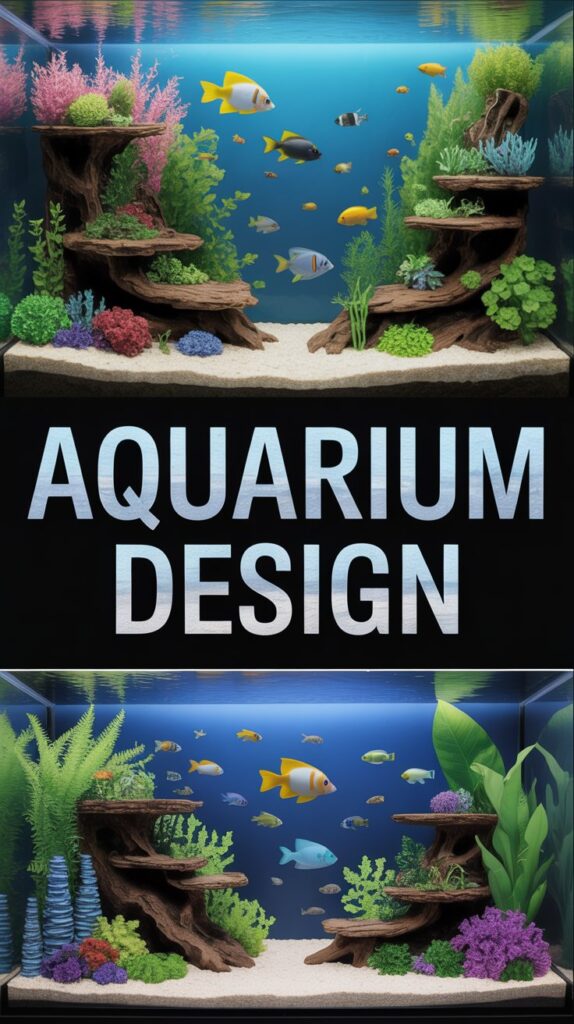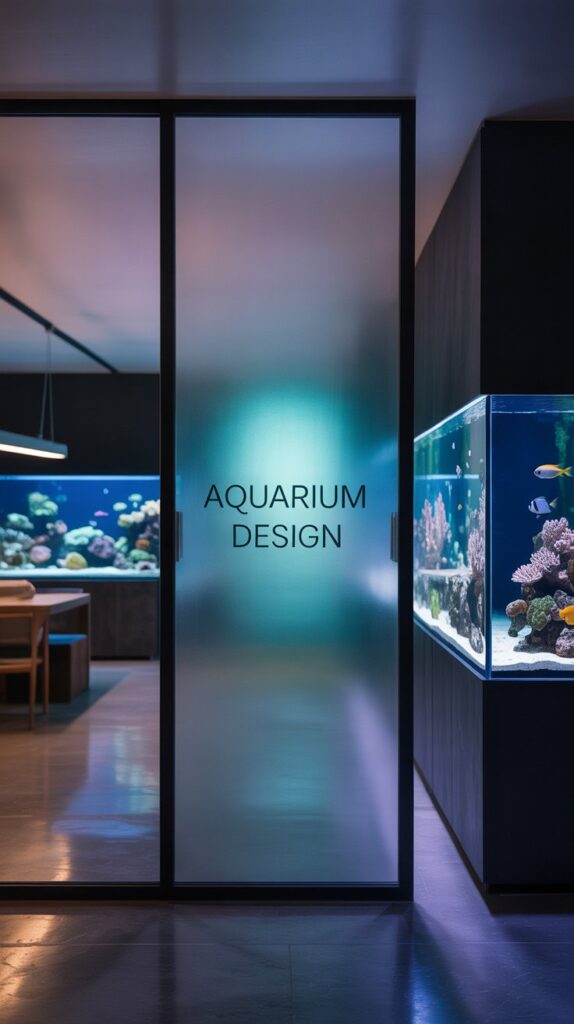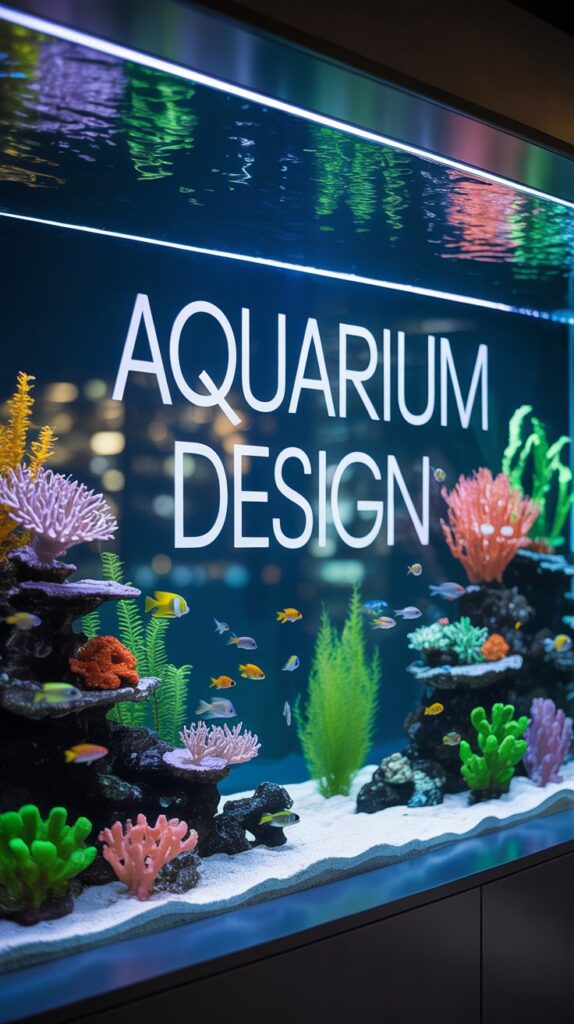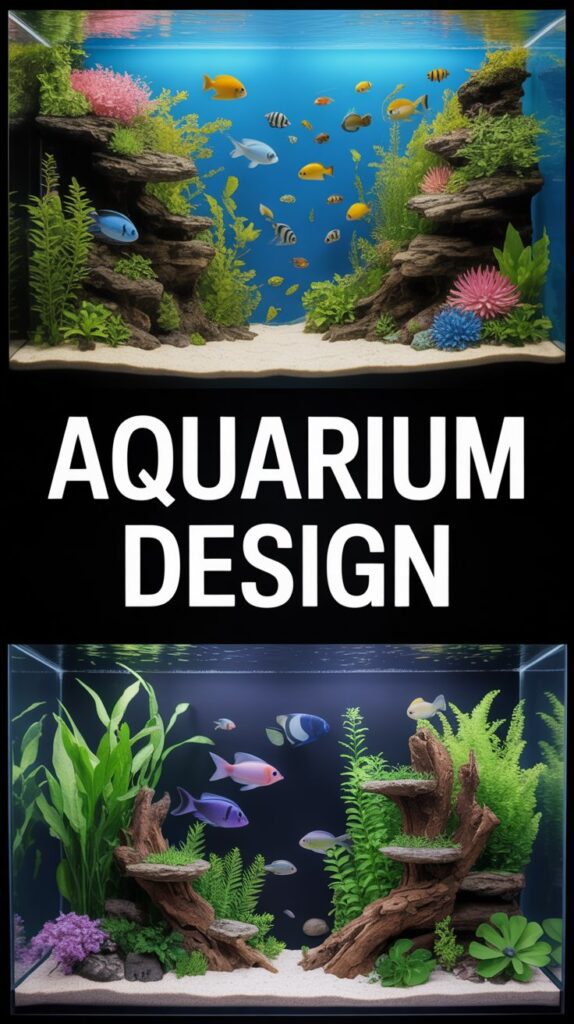Designing an aquarium goes far beyond simply filling a tank with water and adding a few fish. Aquarium design is the art of blending aquatic life, plants, rocks, lighting, and decorations to create a thriving ecosystem that is both visually captivating and healthy for its inhabitants. Whether you are designing a small home aquarium or planning an elaborate aquascape, thoughtful aquarium design ensures a balance between beauty and sustainability.
In this article, we will explore everything about aquarium design—from tank selection, layouts, and aquascaping techniques to lighting, filtration, and maintenance. By the end, you will have all the inspiration and knowledge you need to design an aquarium that stands out as a living piece of art.
Why Aquarium Design Matters
An aquarium is more than just a container for fish; it is a living environment that mimics natural habitats. Good aquarium design creates harmony between aesthetics and biology, ensuring:
- Healthy living conditions for fish, plants, and other aquatic creatures.
- Aesthetic appeal that enhances home or office décor.
- Ease of maintenance by ensuring proper placement of equipment and plants.
- Stress reduction, since watching aquariums is proven to promote relaxation.
Choosing the Right Aquarium

Before diving into the design, you need to select the right aquarium for your space and goals. Factors to consider include:
1. Tank Size
- Small aquariums (10–20 gallons) are compact and easy to fit in small spaces but require more frequent care due to less stable water conditions.
- Medium aquariums (30–50 gallons) are ideal for beginners and allow more design flexibility.
- Large aquariums (75+ gallons) offer greater possibilities for aquascaping and housing a variety of fish but require more equipment and space.
2. Shape of the Tank
- Rectangular tanks are most common and provide the best swimming space.
- Cube tanks work well for aquascaping but can be challenging for tall plants.
- Bow-front tanks add depth and a panoramic view.
- Wall-mounted tanks serve as living art pieces.
Essential Equipment for Aquarium Design
Every well-designed aquarium requires certain equipment to maintain stability:
- Filtration System: Keeps the water clean by removing debris and toxins.
- Heater and Thermometer: Regulates temperature for tropical fish.
- Lighting System: Supports plant growth and enhances aesthetics.
- Air Pump and Stones: Improves oxygen circulation.
- Substrate: Gravel, sand, or soil for plant growth and aesthetics.
Aquarium Design Styles

When it comes to aquarium design, there are several popular styles, each with its unique charm:
1. Nature Aquarium
A design inspired by natural landscapes, using rocks, driftwood, and live plants to mimic rivers, mountains, or forests underwater.
2. Dutch Style Aquarium
Focuses on colorful aquatic plants arranged in layers and patterns, creating a garden-like effect.
3. Iwagumi Aquascape
A minimalist design style using carefully placed rocks and carpet plants, emphasizing balance and simplicity.
4. Biotope Aquarium
Replicates specific natural habitats like Amazon rivers or African lakes with species and plants native to that environment.
5. Themed Aquarium
Incorporates artificial decorations such as castles, shipwrecks, or fantasy themes, great for kids and beginners.
Choosing Substrate and Plants
Substrate
- Gravel: Easy to clean and good for beginners.
- Sand: Great for bottom-dwellers like catfish and loaches.
- Aquarium Soil: Ideal for planted tanks as it provides nutrients.
Plants
Live plants not only add beauty but also improve water quality. Some popular choices include:
- Java Fern
- Anubias
- Amazon Sword
- Vallisneria
- Moss Carpets
Artificial plants can be used for low-maintenance designs but lack natural filtration benefits.
Adding Hardscape Elements

Hardscape refers to the non-living decorative elements in aquarium design, such as rocks, driftwood, and ornaments.
- Rocks: Create natural caves and add visual depth. Common choices include lava rock, slate, and dragon stone.
- Driftwood: Adds character while lowering pH naturally.
- Ornaments: Shipwrecks, treasure chests, and statues add personality but should be safe and non-toxic.
Lighting in Aquarium Design
Lighting is essential for both plants and aesthetics.
- LED Lights: Energy-efficient and customizable.
- Fluorescent Lights: Common for plant growth.
- Intensity & Duration: Most aquariums require 8–10 hours of light per day.
Warm lighting creates a cozy ambiance, while cooler tones mimic daylight.
Stocking the Aquarium: Choosing Fish
When selecting fish for your aquarium design, consider:
- Compatibility: Avoid aggressive species in community tanks.
- Size: Ensure fish have enough swimming space.
- Color Balance: Mix species to create contrast and visual appeal.
- Schooling Fish: Neon tetras, rasboras, and guppies look stunning in groups.
Creating Layouts in Aquarium Design
Designing an aquarium involves arranging elements to create depth and flow. Some layout tips include:
- Rule of Thirds: Place focal points slightly off-center for natural balance.
- Foreground, Midground, Background Plants: Layer plants for depth.
- Open Swimming Spaces: Ensure fish have room to move freely.
- Focal Points: Use rocks or driftwood as central features.
Maintenance of a Designed Aquarium

Even the best aquarium design requires regular care:
- Weekly partial water changes (20–30%).
- Cleaning algae from glass and decorations.
- Pruning plants for growth and shape.
- Checking equipment like filters and heaters.
- Monitoring fish health regularly.
Aquarium Design for Different Spaces
Home Aquariums
Small to medium aquariums with natural or themed designs make excellent décor pieces.
Office Aquariums
Minimalist aquascapes reduce stress and create a calming workspace.
Public Aquariums
Large-scale designs focus on natural biotopes and diverse ecosystems.
Common Mistakes in Aquarium Design
- Overcrowding the tank with too many fish.
- Choosing incompatible fish species.
- Using poor-quality decorations that release toxins.
- Neglecting maintenance.
- Overusing artificial colors or lights that stress fish.
Benefits of a Well-Designed Aquarium
- Enhances room aesthetics.
- Promotes relaxation and reduces stress.
- Educates children and adults about ecosystems.
- Provides a rewarding hobby.
FAQs About Aquarium Design
Q1: What is the best aquarium design for beginners?
A community freshwater tank with hardy fish like guppies, mollies, and tetras, combined with low-maintenance plants, is best for beginners.
Q2: How do I choose decorations for my aquarium design?
Choose non-toxic, aquarium-safe decorations. Natural elements like rocks and driftwood are best for aesthetics and stability.
Q3: Can I mix live plants with artificial decorations?
Yes, mixing both can create a balanced design, but live plants improve water quality while artificial ones are maintenance-free.
Q4: How many fish should I add to my designed aquarium?
Follow the general rule: one inch of fish per gallon of water. However, research each species’ needs before adding.
Q5: What lighting is best for aquarium design?
LED lights are the most versatile option as they enhance colors, support plant growth, and save energy.
Q6: How often should I clean a designed aquarium?
Perform partial water changes weekly and a deep clean every 4–6 weeks depending on fish load and plant density.
Q7: Which aquarium design style is most popular?
Nature and Dutch-style aquariums are highly popular due to their natural and vibrant beauty.

